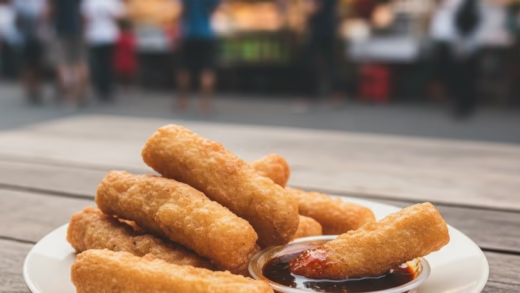Pulasan

Introduction
Pulasan (Nephelium mutabile) is one of Malaysia’s most cherished heritage fruits—an indigenous gem that blends cultural significance, exquisite sweetness, and rising commercial potential. With its vibrant red shell, rich succulent flesh, and deep-rooted presence in Malaysian communities, Pulasan stands as an authentic representation of the region’s biodiversity and food identity. Today, the fruit is gaining renewed attention among chefs, consumers, and agribusiness stakeholders seeking premium local produce with strong narrative value. Its natural appeal, seasonal exclusivity, and versatility position Pulasan as a strategic asset for Malaysia’s fruit innovation and export ambitions.
Origin
Pulasan is native to the Malay Peninsula and Borneo, where it has flourished for centuries in traditional orchards. Scientifically known as Nephelium mutabile, it belongs to the Sapindaceae family—alongside rambutan, longan, and lychee. Historically cultivated in rural communities, the fruit spread through local trade to Southern Thailand, Indonesia, and the Philippines. While less commercialized than rambutan, Pulasan offers notable agricultural advantages including high sweetness levels, robust flavour retention, and potential for hybrid development—key factors driving its growing market relevance.
Category
| Scientific Name | Family | Category | Type (Seasonality) |
|---|---|---|---|
| Nephelium mutabile | Sapindaceae | Tropical Fruit | Seasonal (June–August) |
Appearance
Pulasan features a rounded to oval shape, measuring 5–7 cm in diameter. Its rind is thick and covered in short, blunt tubercles—creating a smooth, grippy texture. Colour ranges from vibrant crimson to dark maroon or purple-black at peak ripeness. Inside, the fruit reveals glossy white, juicy flesh that separates easily from the seed. Its clean appearance and effortless handling enhance its premium consumer appeal.
Popular Varieties
| Variety | Local Name | Distinctive Features | Region of Prominence |
|---|---|---|---|
| Pulasan Merah | Pulasan Merah | Bright red skin, exceptionally sweet flesh | Kedah, Perak |
| Pulasan Hitam | Pulasan Hitam | Dark-rind variety with firm, aromatic flesh | Johor, Selangor |
| Pulasan Kampung | Pulasan Kampung | Traditional seedling type, variable taste notes | Rural Malaysia |
| Pulasan Kahwin | Pulasan Kahwin | Hybrid cultivar; larger fruits and richer aroma | Johor, Perak |
Preparation
Pulasan is consumed in numerous ways across Malaysian households and F&B concepts:
- Fresh: Eaten immediately after peeling.
- Snacks: Chilled fruit, fruit bowls, or mixed platters.
- Desserts: Sorbets, jellies, compotes, shaved ice creations.
- Traditional Cuisine: Sweet broths, pickles, preserved fruit.
- Beverages: Juices, smoothies, artisan syrups and mocktails.
Equipment
- Paring knife (optional; usually peeled by hand)
- Cutting board
- Serving bowl
- Airtight container (storage)
- Strainer or mesh filter (for juices)
Taste
Pulasan is celebrated for its exceptionally sweet and nectar-like flavour profile. It offers minimal acidity, pronounced floral undertones, and a rounded, syrupy sweetness—often described as superior to rambutan. Its dessert-like taste makes it highly suitable for premium F&B development.
Texture
The fruit’s flesh is soft yet springy, juicy and clean-biting with low fibrousness. Its seed detaches easily, providing a refined eating experience.
Aroma
Pulasan has a gentle tropical fragrance with floral notes and a mild berry-like aroma. Its subtle scent enhances consumer acceptance, especially in premium retail environments.
Cultural Significance
Pulasan is a seasonal marker of agricultural abundance in Malaysia. Traditionally shared among neighbours and enjoyed in family gatherings, the fruit embodies community warmth and rural heritage. It features prominently in village markets, festive periods, and intergenerational traditions. Pulasan also symbolizes Malaysia’s commitment to preserving indigenous biodiversity and strengthening regional food identity.
Regional Cultivation
| State/Region | Famous For | Harvest Period |
|---|---|---|
| Kedah | Pulasan Merah orchards | June–August |
| Johor | Pulasan Hitam and hybrid cultivars | July–September |
| Perak | Large-fruited varieties | June–July |
| Selangor | Community orchard produce | July–August |
| Sabah & Sarawak | Wild and semi-cultivated types | June–September |
Social Context
Pulasan thrives in social spaces such as pasar tani, roadside stalls, and seasonal markets. Families often buy the fruit in bulk during peak harvest to enjoy together. Urban consumers seek it at boutique fruit stores and premium grocers, while tourists encounter Pulasan as a cultural highlight during fruit seasons.
Nutritional Information (per 100g)
| Nutrient | Amount |
|---|---|
| Calories | ~80 kcal |
| Carbohydrates | 20–22 g |
| Protein | 0.8–1 g |
| Fat | 0.3–0.5 g |
| Fiber | 1–2 g |
| Vitamins | Vitamin C, B-complex |
| Minerals | Iron, Potassium, Calcium |
Health Benefits
- Rich in antioxidants that support cell protection
- Strengthens immunity through vitamin C
- Provides natural energy via slow-release carbohydrates
- Promotes digestive health
- Hydrating and refreshing
- Supports heart health with potassium content
Dietary Restrictions
- Consume in moderation for those monitoring blood sugar
- Not recommended in excess for individuals with gastric sensitivity
- Those allergic to Sapindaceae fruits (e.g., rambutan, lychee) should be cautious
Allergens
Possible mild reactions for individuals sensitive to tropical fruit proteins or sap of related fruit species.
Cost
Pulasan pricing varies by region and cultivar:
- Standard varieties: RM10–RM18/kg
- Premium red types: RM18–RM25/kg
- Hybrid or limited-batch cultivars: RM25–RM35/kg
Production & Export
Pulasan remains a niche but high-value commodity in Malaysia’s tropical fruit sector. While domestic consumption dominates, small-scale exports reach Singapore, Brunei, East Asia, and selected Middle Eastern markets. With rising global interest in exotic fruits, Pulasan presents opportunities in:
- Frozen aril export
- Premium fresh-fruit retail
- Artisanal beverage and dessert manufacturing
- Agro-tourism and orchard-based experiences
- Value-added processing (purees, concentrates, dried fruit)
As demand grows for authentic Southeast Asian produce, Pulasan is well-positioned to emerge as a distinctive export differentiator for Malaysia.
Symbolism
Pulasan embodies abundance, authenticity, and cultural continuity. It symbolizes unity and generosity, reflecting Malaysia’s communal traditions. As the fruit enters modern culinary and commercial landscapes, it communicates values of heritage preservation, sustainable agriculture, and national identity.








Comments are closed.